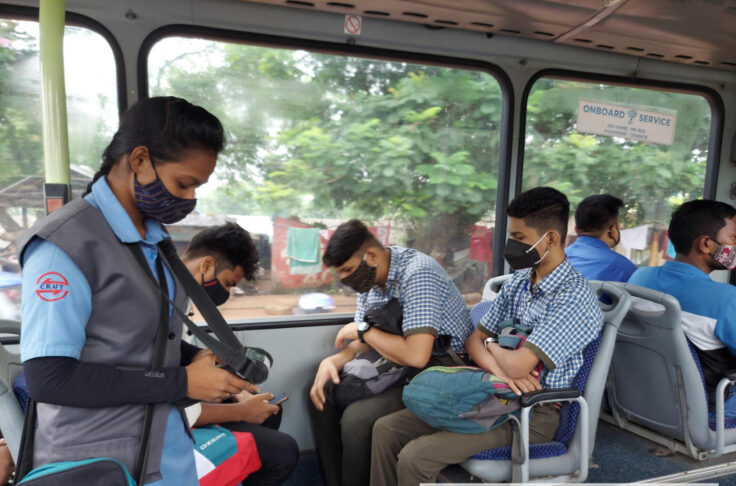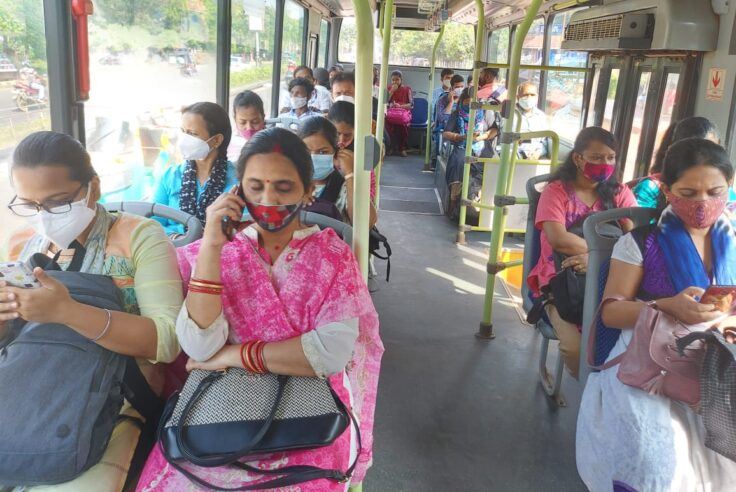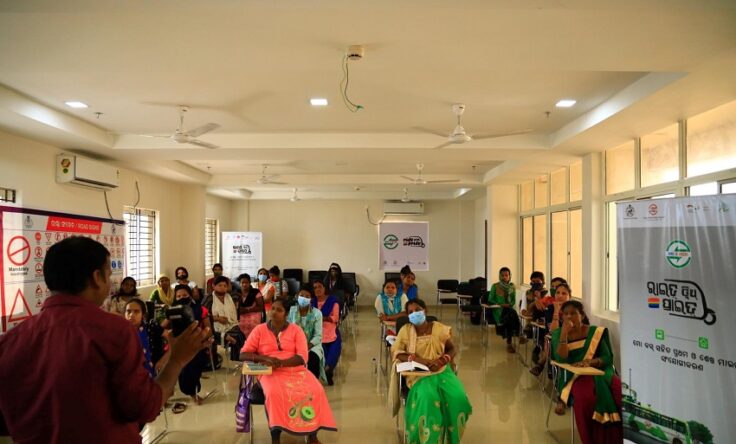October 05, 2023
How This Indian City is Empowering Women and Improving Transport Connectivity
The City of Bhubaneswar, a 2023 Sustainable Transport Award Honorable Mention, has been a significant mover in green and equitable urban mobility since 2018, following the modernizations of its Mo Bus electric bus service and its Mo E-Ride three-wheeler feeder system.
Read the 2023 STA Spotlight case study on Bhubaneswar to learn more about the region and its mobility strategies.
Bhubaneswar is the capital of the State of Odisha in eastern India. It forms one of the “Golden Triangle of Tourism” nodes in the State, along with the neighboring cities of Puri and Konark. This urban center, home to over a million people, is best known as the “Temple City” for being the site of hundreds of historic temples and structures dating back centuries. Today, it is one of the fastest-expanding cities in India, growing by nearly 30% between 2011 and 2021. Aside from being a hub for tourism, culture, and history, Bhubaneswar is gaining recognition for its innovative, forward-thinking efforts to improve mobility and urban connectivity for residents across the region.
The growth in the city’s population in recent years has led to an acceleration of private vehicle ownership, as has happened in many urbanizing regions worldwide. This trend has put an increasing burden on the city’s existing streets and transport infrastructure. As more residents, especially in marginalized communities, depend on walking, cycling, and public transport for daily travel, Bhubaneswar’s streets and roads are increasingly congested, hazardous, and polluted due to the use of emissions-heavy vehicles.

To tackle these growing urban development and mobility challenges and to ensure equitable access for all its residents, Bhubaneswar’s Capital Region Urban Transport (CRUT) agency has doubled down on redesigning its services, particularly when it comes to enhancing connections between peripheral neighborhoods and central parts of the city. A large part of this endeavor has been to introduce modern electric buses into its Mo Bus city service, making commutes safer, more comfortable, and healthier for all riders.
In addition, with Mo E-Ride, CRUT introduced electric three-wheelers that directly address first- and last-mile connectivity issues with a feeder system that bridges underserved areas with the rest of the CRUT-operated transport system. Most notably, the agency has focused its skills training and employment programs for these services on women, low-income, and transgender populations to ensure their representation in the workforce.

With this spotlight on rider experience, gender equity, and electrification, CRUT succeeded in increasing ridership on its services by almost 200% in under five years, with 57% of passengers reportedly shifting from private transport modes. Much of this success in a modal shift can be attributed to the agency and State’s investments into these dual Mo Bus and Mo E-Ride networks. These electric buses and rickshaws are helping reduce transport-related emissions, improve air quality, lower noise pollution, and enhance the comfort of commuters, further establishing public transport as a more attractive alternative to driving.
Beyond that, the effort to make the regional transport systems more accessible and safer for diverse types of people has been paying off. Previously, almost no women worked in the region’s transport operations — now, 40% of all the conductors on the bus service are women. Women, transgender people, and people living with HIV are being trained as operators of the e-rickshaws and buses. As a result, CRUT reported more ridership from women who have indicated that they feel more comfortable and safer with women represented as employees. With these efforts, CRUT and local officials have demonstrated an inspiring commitment to ensuring that its urban mobility plans meet the needs of diverse users who are often excluded from such policies.

Since launching these improved systems, Bhubaneswar has set a vision for inclusion and urban development that it plans to carry forward. Future objectives for the area’s public transport and street designs include creating more child- and family-friendly environments through traffic calming strategies that create accessible public spaces and safer roads. In addition, officials are looking to better manage traffic across the region through actions like parking fees levied at strategic locations to discourage unnecessary driving trips. Based on strategic traffic flow studies, multi-level parking developments may also be developed to utilize limited urban spaces better.
CRUT, the Government of Odisha, and Bhubaneswar have highlighted the many possibilities that exist when officials and planners consider and engage with the needs of everyday communities and users in their work. By employing this bottom-up approach of inclusion, feedback, and outreach, the region’s public transport systems can now be used as a model for sustainable, equitable transformation all across India and even the world.
Read the 2023 STA Spotlight on Bhubaneswar and watch the webinar above to learn more about how CRUT and the local government reshaped its transport systems. The case study offers technical insights and key lessons for other cities, policymakers, and planners seeking tangible change.
